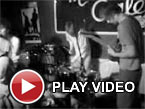Deathprod
Helge Sten, member of Supersilent and manipulator of the sonicunderworld, has released a four-CD set of music composed between 1991and 2001 as Deathprod. Three of these discs are filled with materialthat has either been previously unavailable or available only inpainfully limited quantities. The fourth disc, Morals and Dogma,is Sten's latest work and is available seperately if a four-CD packageis a bit too pricey. But what a beautiful package this is: summoned,bound, and forged in the midsts of Norway, this release exhibitsDeathprod's skills as a producer, an engineer, and a writer. The soundsvary over the four discs, but it may be necessary to take a break fromthe sometimes overwhelming atmosphere of the dark and lonely placesthat dominate this release. Deathprod, though long and diverse,is an excellent introduction to Helge Sten's work. Supersilent fans maywant to investigate this release as its quieter moments reveal just howcentral Sten can be to the band. If spending some extra cash on a boxset from an slightly obscure individual doesn't make much sense, pickup Morals and Dogma, first. That box will definitely look more appealing, then.
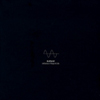 The intimidating and unnerving tones that open Reference Frequenciesbelie what follows them. The NASCAR-like buzz that rules over the firstsong inspires images of unholy insects parading over the landscape insome version of the end of the world. Their tirade empties rivers andleaves only dust and the beating of their wings topples buildings insudden crashes played out repeatedly in slow motion. This terror lastsonly moments when, suddenly, a quiet and inquiring voice (poet MattBurt) recites a series of descriptive lines intercepted, here andthere, by mnemonic recitations from philosophy, history, and personalexperience. Burt's voice is the sole instrument of this track besidessome very quiet background noise presumably constructed by Sten. Thisminimalism works suprisingly well; the timbre of Burt's voice isrelaxing and his stories, to some degree, inspire some kind ofvoyeuristic tendency in my character. I feel as though I'm watchingsomeone's nuances unfold quietly, slowly, and with some degree ofincompetence. "Recording the Jürg Mager Trio: La Luna" and "Recordingthe Jürg Mager Trio: A Shortcut to the Stars" unleash Deathprod's moreplayful side and capitalize on the unpredictability of this disc. Thesetwo songs, released as a 7" for Christmas in 1995, are not only comedicand fun to some degree, but they're both moody and atmospheric enoughto outline the scene of a hazy bar in a David Lynch film, populated byonly the strangest of his characters. The chugging rhythm of the organcarries a groove through the latter that proves to be especiallyhypnotic and leaves me swaying to and fro with its perpetual motion.The diversity on this disc is its greatest strength. All of the"Reference Frequencies" tracks were recorded in 1991 and each of theother tracks span the spectrum from 1995 to 2001. "Dora 3" closes theCD out and provides an excellent relief from the destruction of"Reference Frequencies #7, #8," and "#5." Violinist Ole Henrik Moestrains his instrument's voice out over the churning and boiling ofsome unknown substance. While the sound isn't as immediately physicalas the "Reference Frequencies" pieces, it isn't exactly an invitingcomposition, either. Sten has his mind set on something beyond thehuman eye. Whatever it is that lurks beyond his imagination reeks ofsinister plots and sickening panoramas.
The intimidating and unnerving tones that open Reference Frequenciesbelie what follows them. The NASCAR-like buzz that rules over the firstsong inspires images of unholy insects parading over the landscape insome version of the end of the world. Their tirade empties rivers andleaves only dust and the beating of their wings topples buildings insudden crashes played out repeatedly in slow motion. This terror lastsonly moments when, suddenly, a quiet and inquiring voice (poet MattBurt) recites a series of descriptive lines intercepted, here andthere, by mnemonic recitations from philosophy, history, and personalexperience. Burt's voice is the sole instrument of this track besidessome very quiet background noise presumably constructed by Sten. Thisminimalism works suprisingly well; the timbre of Burt's voice isrelaxing and his stories, to some degree, inspire some kind ofvoyeuristic tendency in my character. I feel as though I'm watchingsomeone's nuances unfold quietly, slowly, and with some degree ofincompetence. "Recording the Jürg Mager Trio: La Luna" and "Recordingthe Jürg Mager Trio: A Shortcut to the Stars" unleash Deathprod's moreplayful side and capitalize on the unpredictability of this disc. Thesetwo songs, released as a 7" for Christmas in 1995, are not only comedicand fun to some degree, but they're both moody and atmospheric enoughto outline the scene of a hazy bar in a David Lynch film, populated byonly the strangest of his characters. The chugging rhythm of the organcarries a groove through the latter that proves to be especiallyhypnotic and leaves me swaying to and fro with its perpetual motion.The diversity on this disc is its greatest strength. All of the"Reference Frequencies" tracks were recorded in 1991 and each of theother tracks span the spectrum from 1995 to 2001. "Dora 3" closes theCD out and provides an excellent relief from the destruction of"Reference Frequencies #7, #8," and "#5." Violinist Ole Henrik Moestrains his instrument's voice out over the churning and boiling ofsome unknown substance. While the sound isn't as immediately physicalas the "Reference Frequencies" pieces, it isn't exactly an invitingcomposition, either. Sten has his mind set on something beyond thehuman eye. Whatever it is that lurks beyond his imagination reeks ofsinister plots and sickening panoramas.
samples:
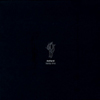 Sten's cinematic brush marks the whole of Treetop Drive and plays out as a more subtle and cohesive record than Reference Frequenciesdoes. Originally released in 1994 in an edition of 500, the album wassubsequently held back due to conflicts with the label. For beingreleased in 1994, this record sounds amazingly fresh. Composed of three"Treetop Drive" compositions and the closing "Towboat," the whole ofalbum is orchestral and unitary by nature. The first two tracks arecomposed of a series of string breaths, the first track letting themfloat about a whole sea of sounds; most of these knells are harmlessand secondary, only highlighting the bellowing of the strings. Thesecond composition combines strings with the roar and consumption ofdeep bass samples and static-filled echoes of feedback. The imaginarystory that the first two tracks tell is of slow degeneration, oftransformation and the sometimes invisible shift between dreams andnightmares. Again, Sten's knack for the hidden and terrible shinesthrough and reveals him to be good friends with the denizens of thenight. "Treetop Drive 3" and "Towboat" share more in common witheachother than the first two songs do, but both are linked to the firsthalf of the album by color and spirit. Where a rhythmic and dominantstring section had dominated the first two pieces, a stream of sounddominates the later two. There isn't a solo instrument or a particularsound that stands over and above anything on "Treetop Drive 3": only avocal sample about the experience of death that young individuals mighthave interrupts the sometimes electronic, sometimes brass, andsometimes ineffable flow of sound. The feeling is indeed funeralthroughout these nine gorgeous minutes; and therein the beauty ofSten's work becomes more evident. As horrific as Sten can be, hiscompositions bleed a certain familiarity that gives them the veneer ofcomfort. "Treetop Drive 3" feels like a lullaby at times and "Towboat"sews that deceptiveness into place. The final and longest piece beginswith a melody of graceful beauty and slowly distorts into a dreary walkalong a violent shore. Surely there is something in the ocean justwaiting for a foolish traveller to take a bad step. Or, perhaps, thereis a secret waiting out in that ocean and its contents are enough todrive any human insane. Whatever the case may be, the guitar-like moansand metallic churning that mark this song fit together perfectly andend Treetop Drive on a very high and memorable note.
Sten's cinematic brush marks the whole of Treetop Drive and plays out as a more subtle and cohesive record than Reference Frequenciesdoes. Originally released in 1994 in an edition of 500, the album wassubsequently held back due to conflicts with the label. For beingreleased in 1994, this record sounds amazingly fresh. Composed of three"Treetop Drive" compositions and the closing "Towboat," the whole ofalbum is orchestral and unitary by nature. The first two tracks arecomposed of a series of string breaths, the first track letting themfloat about a whole sea of sounds; most of these knells are harmlessand secondary, only highlighting the bellowing of the strings. Thesecond composition combines strings with the roar and consumption ofdeep bass samples and static-filled echoes of feedback. The imaginarystory that the first two tracks tell is of slow degeneration, oftransformation and the sometimes invisible shift between dreams andnightmares. Again, Sten's knack for the hidden and terrible shinesthrough and reveals him to be good friends with the denizens of thenight. "Treetop Drive 3" and "Towboat" share more in common witheachother than the first two songs do, but both are linked to the firsthalf of the album by color and spirit. Where a rhythmic and dominantstring section had dominated the first two pieces, a stream of sounddominates the later two. There isn't a solo instrument or a particularsound that stands over and above anything on "Treetop Drive 3": only avocal sample about the experience of death that young individuals mighthave interrupts the sometimes electronic, sometimes brass, andsometimes ineffable flow of sound. The feeling is indeed funeralthroughout these nine gorgeous minutes; and therein the beauty ofSten's work becomes more evident. As horrific as Sten can be, hiscompositions bleed a certain familiarity that gives them the veneer ofcomfort. "Treetop Drive 3" feels like a lullaby at times and "Towboat"sews that deceptiveness into place. The final and longest piece beginswith a melody of graceful beauty and slowly distorts into a dreary walkalong a violent shore. Surely there is something in the ocean justwaiting for a foolish traveller to take a bad step. Or, perhaps, thereis a secret waiting out in that ocean and its contents are enough todrive any human insane. Whatever the case may be, the guitar-like moansand metallic churning that mark this song fit together perfectly andend Treetop Drive on a very high and memorable note.
samples:
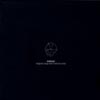 Of the four discs, Imaginary Songs from Tristan da Cunhais perhaps the most unusual. Completely different from anything else inthis set, these tracks were composed in 1996 and began as part ofSten's graduation work at the Trondheim Art Academy. Tristan da Cunhais the most remote island in the world (located somewhere in the SouthAtlantic) and Sten drew the inspiration for this music from thatlocation. The first four tracks were recorded by Sten and violinist OleHenrik Moe and then transfered to wax cynlinders. These wax cylinderswere then recorded back to a digital format; the result is a recordingthat feels as though it could have come from the 1930s, when only somerich and influential people could've possibly reached the remoteparadise of the island. But these aren't the smooth sounds of affluentAmerica resounding through the speakers. There's an eerie glow comingoff the island and this is what Sten has managed to record. Perhapsthere are things best left alone on Tristan da Cunha or perhaps thereare secret rituals performed there by long forgotten peoples. Whateverthe case be, the first four songs do not depict a bright and exultantworld, but instead emphasize the mystery of remote places and theunknown. "The Contraceptive Briefcase II" plays out like an opera overthe abyss. Unearthly choirs of real voices, glass ringing, theremin,violin, and other assorted sounds resonate in any empty space and seemto tell the story of the return from the island. There is a screamhaunting each of the passenger's minds, something projected out of thepast and made manifest in the howling winds of the ocean and thecreaking of the old wooden ship. The song ends with the sound ofapplause, as though the whole thing were a performance meant to carryout the plans that had begun with "Burntwood." This applause slowlydeteriorates, however, into applause through the medium of the waxcylinders. Was the whole thing a play meant to tell the story of somefantastic island? Or is there a story here that is supposed to act as areal warning for would-be adventurers tempted by the fame and glorythat comes with uncovering the unknown and naming the nameless?
Of the four discs, Imaginary Songs from Tristan da Cunhais perhaps the most unusual. Completely different from anything else inthis set, these tracks were composed in 1996 and began as part ofSten's graduation work at the Trondheim Art Academy. Tristan da Cunhais the most remote island in the world (located somewhere in the SouthAtlantic) and Sten drew the inspiration for this music from thatlocation. The first four tracks were recorded by Sten and violinist OleHenrik Moe and then transfered to wax cynlinders. These wax cylinderswere then recorded back to a digital format; the result is a recordingthat feels as though it could have come from the 1930s, when only somerich and influential people could've possibly reached the remoteparadise of the island. But these aren't the smooth sounds of affluentAmerica resounding through the speakers. There's an eerie glow comingoff the island and this is what Sten has managed to record. Perhapsthere are things best left alone on Tristan da Cunha or perhaps thereare secret rituals performed there by long forgotten peoples. Whateverthe case be, the first four songs do not depict a bright and exultantworld, but instead emphasize the mystery of remote places and theunknown. "The Contraceptive Briefcase II" plays out like an opera overthe abyss. Unearthly choirs of real voices, glass ringing, theremin,violin, and other assorted sounds resonate in any empty space and seemto tell the story of the return from the island. There is a screamhaunting each of the passenger's minds, something projected out of thepast and made manifest in the howling winds of the ocean and thecreaking of the old wooden ship. The song ends with the sound ofapplause, as though the whole thing were a performance meant to carryout the plans that had begun with "Burntwood." This applause slowlydeteriorates, however, into applause through the medium of the waxcylinders. Was the whole thing a play meant to tell the story of somefantastic island? Or is there a story here that is supposed to act as areal warning for would-be adventurers tempted by the fame and glorythat comes with uncovering the unknown and naming the nameless?
samples:
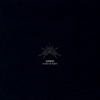 Recorded between 1994 and 2000, Morals and Dogmais Sten's newest Deathprod release and proves itself to be his mostemotional and enthralling work. Looking over the previous threerecords, it's obvious that Sten's greatest strength lies in his abilityto fill space in just the right way. He is a master of keeping openspaces the way they should be, of making paranoid and claustrophobicmoments as tight and discomforting as possible, and he never packs anymoment too tightly with busy sounds. His arrangements are perfectlyorganized without sounding as though they are overstructured. Everysong on this disc plays to the tune of that advantage. Morals and Dogmais a mostly quiet album, emphasizing the subtle powers Sten holds whenin control of silence and sound. Subterranean hums shake the ground andcause the slightest trembling in the foundations of reality and themists of Hans Magnus Ryan's violin obscure the hollowed stirrings ofthe outside world. "Dead People's Things" stands out as one of Sten'smost impressive pieces. Though I can't be sure, what I believe could bea theremin snakes its way through the chimerical world of stonebridges, cold air, and barren trees. There are silhouettes moving overthose bridges and through that air, dressed in top-hats, Victorianjackets, and high, black boots; their demeanor is not an approachableone. It's amazing to hear how only three or four simple elements canmake for compelling listening over eighteen and a half minutes ofmusic. If the boxset is simply too expensive, purchase this disc justto hear "Dead People's Things." The bleak tangibility that consumesthis record is gut-wrenchingly austere, but undeniably gorgeous. It'sas though Sten has made himself a cipher for the number 0 and returnedto reveal that it has content. "Orgone Donor" and "Cloudchamber" bothfollow in a similar fashion and both melt away slowly, filling the airwith the same smoke that will come to conceal the song's origins. Icome away from both feeling as though Sten has managed to bring backfield recordings from a completely different world, where death andsilence are revered ideas or forms and no longer suffocated under thedensity of the present. Sten's sound is unrestricted and unfettered,its heart an empty space where notions emerge for no other reason thanthat they must. Fittingly, even the heaviest of the songs here,"Cloudchamber," ends with a hush; a simple silk hum overcomes thebrutality of the sun's deadly rays and sinks the world in a cool oceanwhere all that's left to do is contemplate everything on the inside.
Recorded between 1994 and 2000, Morals and Dogmais Sten's newest Deathprod release and proves itself to be his mostemotional and enthralling work. Looking over the previous threerecords, it's obvious that Sten's greatest strength lies in his abilityto fill space in just the right way. He is a master of keeping openspaces the way they should be, of making paranoid and claustrophobicmoments as tight and discomforting as possible, and he never packs anymoment too tightly with busy sounds. His arrangements are perfectlyorganized without sounding as though they are overstructured. Everysong on this disc plays to the tune of that advantage. Morals and Dogmais a mostly quiet album, emphasizing the subtle powers Sten holds whenin control of silence and sound. Subterranean hums shake the ground andcause the slightest trembling in the foundations of reality and themists of Hans Magnus Ryan's violin obscure the hollowed stirrings ofthe outside world. "Dead People's Things" stands out as one of Sten'smost impressive pieces. Though I can't be sure, what I believe could bea theremin snakes its way through the chimerical world of stonebridges, cold air, and barren trees. There are silhouettes moving overthose bridges and through that air, dressed in top-hats, Victorianjackets, and high, black boots; their demeanor is not an approachableone. It's amazing to hear how only three or four simple elements canmake for compelling listening over eighteen and a half minutes ofmusic. If the boxset is simply too expensive, purchase this disc justto hear "Dead People's Things." The bleak tangibility that consumesthis record is gut-wrenchingly austere, but undeniably gorgeous. It'sas though Sten has made himself a cipher for the number 0 and returnedto reveal that it has content. "Orgone Donor" and "Cloudchamber" bothfollow in a similar fashion and both melt away slowly, filling the airwith the same smoke that will come to conceal the song's origins. Icome away from both feeling as though Sten has managed to bring backfield recordings from a completely different world, where death andsilence are revered ideas or forms and no longer suffocated under thedensity of the present. Sten's sound is unrestricted and unfettered,its heart an empty space where notions emerge for no other reason thanthat they must. Fittingly, even the heaviest of the songs here,"Cloudchamber," ends with a hush; a simple silk hum overcomes thebrutality of the sun's deadly rays and sinks the world in a cool oceanwhere all that's left to do is contemplate everything on the inside.


